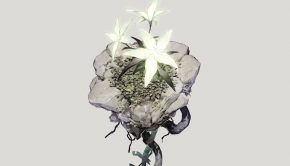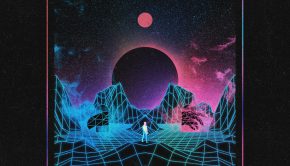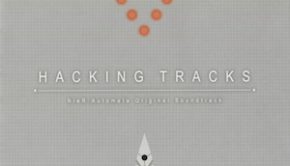Soyo Oka Interview: The Comeback of Super Mario Kart’s Composer
Soyo Oka is a versatile freelance musician that once worked at Nintendo from 1987 to 1995. She is best known for creating several iconic scores for the Famicom (NES), Famicom Disk System, and Super Famicom (SNES), including Super Mario Kart, SimCity, and Pilotwings. As a freelancer, she has gone on to produce music for commercials, animes, special events, vocal albums, and further video games.
Continuing our interview series with veteran composers of GE-ON-DAN, Soyo Oka gives her most extensive interview to date. She initially discusses her journey from child pianist to Nintendo composer, before recollecting how she integrated ‘Soyoisms’ on to titles such as Yuyuki and Super Mario Kart for the company. Finally, the artist discusses her various freelance works and recent return to game music, with several arranged albums and a newly released DS title.
Interview Credits
Interview Subject: Soyo Oka
Interviewer: Chris Greening, Dave Harris
Editor: Chris Greening
Translation & Localization: Ben Schweitzer, Shota Nakama
Coordination: Yuji Takenouchi
Support: Don Kotowski
Interview Content
Dave: Soyo Oka, welcome to the site.
Soyo Oka: Nice to meet you. It was so long ago that I worked at Nintendo. I’m sure that there’s a lot I’ve forgotten, but I think I’ll enjoy recounting my time there.
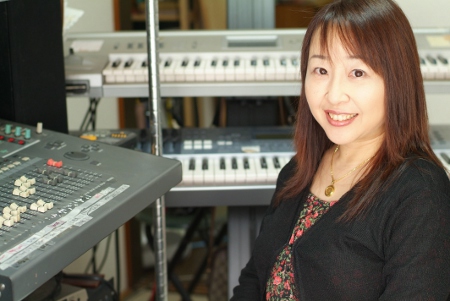
Dave: First of all, it would be fascinating to learn more about your musical background. What were your earliest experiences with music?
Soyo Oka: I began playing classical piano at age four. I know that’s not what you’ve heard in the past, and there’s a reason for that. I had always believed that I had started at age six, and I only recently learned the truth. I had already told everyone that it was at six, too! My mother had always told me it was at six, because of a way of counting one’s lifespan called “East Asian age reckoning.” So I actually began playing the piano at age four.
When I was young, I had a childhood friend — a neighbor — whose mother was a piano teacher. Even at home it was natural to hear piano throughout the day, and I would go over to her house every day to play with her son. Without knowing it, I spent all of that time with my friend bathed in the sound of the piano. My young ears grew during that time, and I am considerably thankful for having had such an experience.
Through my mother, I was able to hear music daily, getting to know her old xylophone from ages 1-2, and it seems like from ages 2-3 I played a toy piano quite enthusiastically. Seeing this, the piano teacher who lived nearby (my friend’s mother) helped me to free up my hands between piano lessons. My teacher would perform accompaniment in the bass register to the simple pieces I would play, and there were many times when I focused more on the beautiful accompaniment than on my playing. After we had finished piano practice, I would always sit down with my back to the keyboard and play a pitch-matching game with my teacher. Looking back now, I can see that these humble beginnings were to prove useful in my later life, and I am thankful for them.
Afterwards, while I was an elementary school student, we moved from Tokyo to Kansai because of my father’s work. There I was inspired by the many children I met in the music classroom who would not only play piano, but play the Electone and compose as well. “Everyone’s doing such cool stuff, so I want to do it too!” My awakening to composition was truly by “example.”
The Electone, with its ability to produce all kinds of instruments and rhythms, exerted a certain amount of fascination over me as a child, and since I hadn’t learned it along with piano, my fantasies led me to buy Electone magazines with my monthly allowance, study scores arranged for the instrument, and practice the bass lines I wrote in my own scores with my left foot (providing the notes with my own voice). I believe that my interest in the Electone provided my first entry into popular music. I wonder today, if I hadn’t been so invested in the Electone… but at the time, it was my dream instrument because I couldn’t have it. On Christmas Eve I left a letter to Santa by my bedside before going to sleep, saying “Please get me an Electone.” I kept it a secret from my parents, and of course, my wish was not granted. (On the other hand, I got an Electone right after starting work. I played it constantly for about half a year, with the result that I simply got tired of it.)
When I was in middle school, I began to compose piano music and music for chamber ensemble. I enjoyed playing the piano, but over time my interest had moved from playing to creating. During my middle school years I played flute in the wind band. It was around this time that I first came to know the joy of sharing music with others.
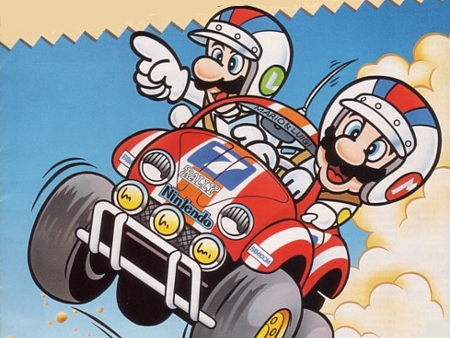
Dave: Your music reveals that you are quite eclectic. Is it safe to assume that many different musicians influenced you?
Soyo Oka: During my childhood and early teenage years, my primary influences were Chopin, Rachmaninov, Debussy, and so forth.
I became aware of Western popular music after I entered high school. I listened to a lot of rock. At that time my idols were Queen! I had all of their albums, and went to see them live when they performed in Japan. Freddie Mercury was still alive at the time, and I was a fan of their guitarist, Brian May. I also liked The Cars and XTC, as well as Crossover, a predecessor of fusion.
Without giving too many examples, among Japanese artists I listened to YMO a good deal. BGM, one of their later albums, is my favorite. On the other hand, among Ryuichi Sakamoto’s solo work, I find the early Thousand Knives to be unforgettable.
For some reason I’ve come across numerous articles saying that I’m a “prog fan,” but I really wasn’t. (Big laugh) I wonder who said that?! I did listen to King Crimson, Pink Floyd, Yes, and the other major bands, though. I think that the places in my work where the rhythms are free is more the influence of classical, recent and modern, than progressive rock.
Dave: To my knowledge, you attended the Osaka College of Music. How did this aid your development as a composer?
Soyo Oka: Yes, I majored in composition at a music college. At this time, I would study classical and modernist music at school, while I was attracted to the world of synthesizers and multi-track recording as a hobby. It was enough of an inspiration to this simple girl just to have won a prize in a multi-track recording contest.
My first forays into computer music began with a simple setup: a composition program by Yamaha I installed onto my MSX, a drum machine, and a “Cat Food Can Mixer” I received from my friend that produced the sound. (It was a home-made mixer made from cat food cans, of all things.) The software could only handle up to eight voices at a time, so I had to supplement it with a manual multi-track recorder when more were needed. There was a studio that rented equipment that I could walk to in thirty seconds, and they had a public MTR, so I would often take the sequences I had written on the MSX over to the studio to reinforce them manually with the studio’s synthesizers.
By the way, my good friend Miki Higashino-san (formerly with Konami), Junko Tamiya-san (formerly with Capcom), and Yosuke Inoue, who is active all over the world in the Jazz scene, were all at the same college, in the same department, and in the same year! I’ve heard that Yoko Shimomura-san also graduated from the school, and I must have run into her on campus at some point as she was only a little older than us, but I hadn’t yet made her acquaintance at the time.
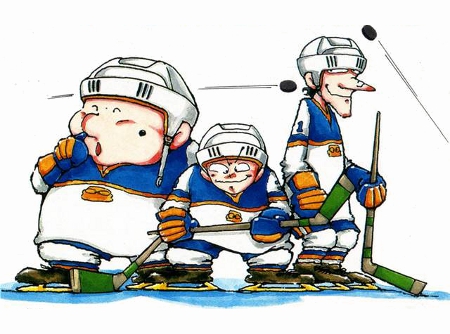
Dave: After graduating, you went on to join Nintendo. What led you to become a composer there?
Soyo Oka: During the culture festival season I would often play keyboards in a friend’s band to help out, but for some reason I never attempted to form my own. I had already become frustrated with the guitar in high school. And at that time, I started going to a certain video game company near our school for a part time composing job, and came to know the profession of a game sound creator.
While Nintendo was hiring, I looked their number up in the NTT Telephone Directory, and managed to get them on the line! That call opened the door to Nintendo for me. It was quite a primitive beginning. At the time, there were very few people in music colleges who were looking to getting into the normal business world, so one had to look on one’s own, as the game companies would never post employment information in schools. (I remember very few music college students seeking employment in normal game companies.)
When Nintendo hired me, I was overjoyed. Since the time I had first turned towards music, my parents would never have imagined that I would get employment with a proper company. (They thought that I would become a piano teacher or, if I had good luck, a school teacher.) I still remember how my father, who had traveled the road of the salaryman, had been the happiest of all. (Even though now I have moved into a different world.)
Dave: Your earliest works with Nintendo were for the Famicom and Disc System titles such as Ice Hockey and Vs. Excitebike. What was it like to work with the limited sound hardware and tools of the day? Was it challenging to produce the compositions and sound effects of these titles?
Soyo Oka: Ice Hockey and Vs. Excitebike are among my earliest works. I found it unexpectedly enjoyable to compose under such limitations, confined to three channels and a noise channel. In places where the sound effects are more prominent, the game would often be programmed to cover over one part, so I had to think about composing such that one of the three parts could disappear without sounding unnatural, and how to compose something that would remain interesting, even at the times when so few sounds were left. Finding the tricks that would allow one part to serve two functions was very enjoyable work, like a sound puzzle.
Dave: Whereas these titles were sports-oriented, you also composed some titles with elaborate scenarios during the day. In particular, could you share your experiences on the Famicom Fairytales series?
Soyo Oka: Around two years after I entered the company, I composed the music for Famicom Mukashi Banashi: Yuyuki, a game that, if I remember correctly, was only released in Japan. It was my first adventure game. The game had a lot of still images, and in those parts the music was more important and more plentiful, so I went about the composition enthusiastically. Developing the game’s music was truly and fully enjoyable. So much so that, when I hear the ending, I can recall the circumstances of its composition.
I used every resource available to me, playing back the melody line on the installed FM synth and combining that with the noise channel plus the four other channels for harmony. I feel that I am suited to these kind of adventure games, so it is unfortunate that I haven’t had any of this type of work since.
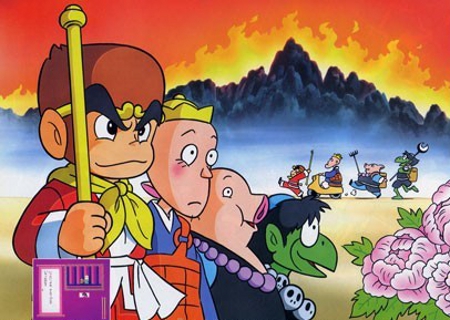
Dave: 3D Hot Rally was another particularly memorable score that received its own album release. How did you ensure this project was a step-up from its predecessor in terms of audio? Given this game featured several sound staff, could you elaborate on what your responsibilities were?
Soyo Oka: I remember working on 3D Hot Rally very well. It too was one of the things I worked on just after entering the company, I recall. I wasn’t on the staff at the beginning, but I was brought on to help out and compose a single piece. So in that way it is different from my other works for Nintendo. I am very surprised that this music is still discussed today. (But since I came to like it very much myself, it makes me very happy as well.)
The piece I wrote was the “Monster” theme. Compared to most video game music of its time, it is quite long, so musically I had to work on the piece’s overall structure, and it was certainly challenging work. I still remember the feeling of exhiliration I felt first hearing my music together with the images.
Dave: You’re perhaps best known for your music to another racing game, Super Mario Kart. Given this game was a Mario tie-in, how did you adapt the sound compared with other racing projects like Vs. Excitebike and 3D Hot Rally?
Soyo Oka: Since, unlike any racing game before it, Mario and characters from the Mario universe were involved, I knew from the beginning I couldn’t focus entirely on the cool image of racing. I remember discussing the music with the director a good deal. Even though it was a racing game, we had to make use of the Mario flavor — without making it too cool, without making it too cute. There was a process of trial and error and a good deal of work was scrapped, but the director also respected my personal style.
My favorite piece in Mario Kart is “Rainbow Road.” And it’s very simple on the surface, but among the various short character themes, I really love “Princess Peach’s Theme.”
Dave: The music for Super Mario Kart has proven very popular over the years, despite not receiving a stand-alone release. Did you expect it to be this enduring at the time?
Soyo Oka: The game itself was very interesting, so it never occurred to me at the time that there would be people who would single out the music and listen to it apart from the game. (laughs) I would never receive any extreme reactions from the people around me, like “this music is really great” or “it’s pretty bad.” So I thought that perhaps the music was unassuming and unchallenging.
And then the children who had played the game grew up and went into the working world. I’ve met many of them through work, so many years later. One of them, a young girl, told me “when I was in elementary school, I would come home after a boring day in class and play Mario Kart. Listening to your music cheered me up so much.” I was very happy to hear that. I have had so many young people give me their thoughts. Among my generation and among people older than me, there are few who have any interest in video games, so the generation gap in responses to Mario Kart is understandable. (laughs)
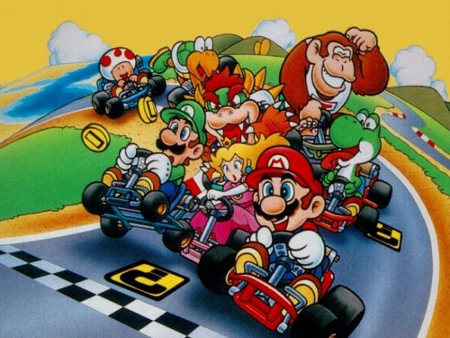
I received many messages and letters from fans I’d never met from Japan and elsewhere. (By any method possible, it seemed.) There was an especially high number of people who would send their own music, saying “I’ve been inspired so much by the music you wrote,” and at first, I found it unbelievable. Fans from other countries seemed particularly passionate, and often they would send CDs and movies they had produced themselves. I am truly moved to think that I have inspired children and young people more than I had ever imagined. At these times, I again come to understand how much of an amazing hit the game was and how many people played it. At the same time, I am honored that people even remember the music that played in the background!
I would like to take this chance to thank everyone for allowing me to draw upon that strength today. At the time, I would go back and forth between work and home, working silently, and I didn’t feel any connection between that and the way players felt. At times I envied my senior, Koji Kondo-san, for receiving so many fan letters with pictures (from the children). (laughs)
Dave: Game credits indicate that you worked with Koji Kondo and Taro Bando on Pilotwings and Super Mario Kart respectively. Could you elaborate on what everyone’s responsibilities were in these projects?
Soyo Oka: They both did sound programming. For Pilotwings I requested the master, Kondo-san, and for Super Mario Kart I requested Bando. I wrote the music for both games.
Pilotwings, Super Mario World, and F-Zero were all developed for release at the launch of the new Super Famicom console, and there were a few times when I was writing music for Famicom games on top of that, but it felt good to experience that large gap in technology. At the same time, it was beyond wonderful that the number of parts was doubled.
Super Mario Kart was my third game for the system, so I was pretty much accustomed to the work of sampling instruments by then. But, although the engine sounds were collected from karts on an actual circuit, that job was left to Bando-san and the other staff. I ended up not going personally. My memory is a bit hazy, but they may have done other work as well. I do regret not having had the chance to see a real kart, though.
Dave: It’d also be interesting to hear about your experiences on SimCity. What were the main considerations when creating the sound for the Super Famicom port for this game? How did your offerings for the cancelled Famicom edition of the game compare and contrast?
Soyo Oka: At the time, I felt that SimCity was very a different type of game. I wanted to avoid giving the players any stress as they dilligently built up a city. I desired to have a consistent musical environment throughout, without any feeling of an ending. I also wanted to reflect the growth from village to megalopolis musically, but not obtrusively. So I began by creating a simple motif (melody), and created variations fitting each piece, so that the music would develop from the simple to the grandiose.
If I remember correctly, I created the music for the Famicom version of SimCity before the Super Famicom version. I think the music for the opening screen had the same atmosphere, but it was a different piece. I remember that the metropolis piece was very similar. As I recall, I concentrated entirely on bringing out the feeling of the city growing, without using any common motifs.
In regards to porting, of course there were very few things ported to the Famicom, and since that version was actually created first, I had to switch to the Super Famicom and create similar pieces with more complex arrangements. I enjoyed that work. Also, if I remember correctly, the Super Famicom version had considerably more music than the Famicom version.
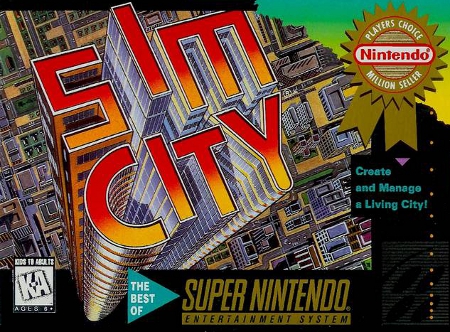
Dave: In 1995, you left Nintendo and began freelance work under the pseudonym ‘DJ Alice’. Looking back, do you still have fond memories of your time at Nintendo?
Soyo Oka: I spent the majority of my youthful twenties at Nintendo, so I have many memories of my time. I would watch and learn from all of my seniors in the sound department, and from all of the creators around me, and that was my upbringing.
Of course, I received a good deal of influence from my senior in the sound department — my superior, Kondo-san — from both his guidence and his fundamental stance as a sound creator. And in that environment, it was a great and fresh experience to be connected to people from other professions (such as programmers and designers). This was especially true of the designers and directors. So many of them were receptive to any kind of information, like an antenna. And all of the people that would listen to many different genres of music had such impeccable taste; I would take time to listen to all of their suggestions.
Often, when I wasn’t busy with work, I would go out with my friends to concerts, bands, plays, and events. It was truly a work environment which allowed me to realize the links connecting music with pictures, images, and all of the other arts. It was a lively, youthful environment.
While writing this, I remembered one more thing. The music I write is of a quite different nature than Kondo-san’s (laughs), and there was this word, “Soyoism,” that I remembered just now. It may have come about because I follow my own path, right or wrong.
Dave: Since leaving Nintendo, you have broadened your horizons by participating in diverse non-game projects, ranging from television and radio adverts, to live events and orchestral productions, to web and digital content. Looking back at your entire freelance career, what do you consider the major highlights and achievements among your non-game works and why?
Soyo Oka: Television and radio commericals hold a particular interest for me. You have to convey definite information through sound in only fifteen or thirty seconds. Today, you can simply insert the video file into the music software and edit while you match sound to image. Before, the set-up wasn’t nearly so convenient, and often you had to synchronize the music software and synthesizers to an external source for the video, but I enjoyed it. As for longer material, I have worked on quite a few corporate PR videos. In these cases, I still liked the work of attaching music to video, even without the strict timeframe of a commercial.
Outside of video-related work, I have worked on corporate sound projects, writing a good deal of background music for picnic spots, department stores, at events and so on. In most of these projects, the directors have a specific idea in mind, wanting not only a specific genre, but also an exact length, down to the second, and as a professional composer, I am prepared for this kind of work.
On the other hand, in the anime work that I discuss below, in which I am limited in far fewer ways, my creative impulse is awakened by the entirely separate challenges of that medium.
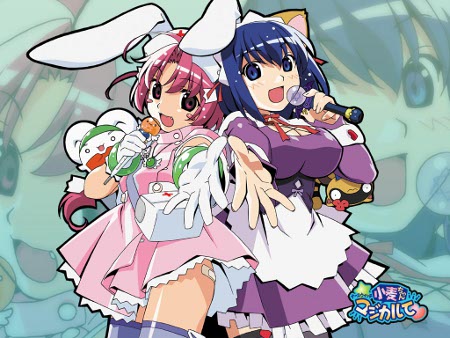
Dave: You have been involved in several animes, including Nurse Witch Komugi-chan. Could you elaborate on your offerings to these scores?
Soyo Oka: I’ve helped out a great deal with the Komugi-chan series. I composed incidental music and the ending theme for the television broadcast version, and then for the image album CD I composed and arranged new songs that hadn’t been in the anime. Afterwards, a Komugi-chan game was made, so I composed the music for that as well on the PlayStation 2! I was always given freedom in the proportion and conception of my music, so it was great work!
Among the incidental music, the piece that left the biggest impression on me was the one which was like a collaboration between breakbeat, ethnic flute, piano, and a crazy live bass. At the time, I was using sample CDs produced by a label aimed at creators called KaeruCafe, and since their sound effects and instrument samples are so pure I had picked up all sorts of effective bass samples from the CD, and I devoted a whole day and night to compiling the bass demo. The bassist’s recording session was the next day, so the sampled track I created, just to give him a sense of what I had in mind, ended up taking an incredible amount of time. It goes without saying that the ad-lib the bassist threw off effortlessly was dozens of times better than the bassline I had patched together.
I found the titles and lyrics of the songs for the image album quite amusing. (For example, “Magical Outbreak” or “Flat Chest Rhapsody”.) It was an honor to meet some unexpected artists in the studio. I had Ikue Otani-san, known as the voice actress for Pikachu in Pokémon, sing a heavy metal song. On a different song, Shiro Sasaki, of Orquesta de la Luz fame, provided a wonderful trumpet performance.
Dave: You were also involved in the Desert Punk series. What was it like to work in the field of vocal music on this project?
Soyo Oka: While the show was in the middle of its broadcast run on TV Tokyo, a single CD for Desert Punk‘s ending theme was released. It actually won in a competition. Originally, I only wrote instrumental music, and I found creating an easy-to-sing melody for a song to be difficult. When I was young, I would write songs for fun, unaware that I was bad at it, and the people around me began to criticize them as being unsingable or too difficult, so I gradually turned away from it, and lost confidence in my abilities.
Around the time of Desert Punk, I had happened to hear about a competition for J-Pop and anime theme songs, so for a time I was writing songs continuously. It was excellent practice. And after getting the hang of it, I came across Desert Punk. But no matter how I may try, I can’t simply create the melody line when composing a song. So of course, the work I submitted to the competition was already arranged and mixed, and I had created it with the overall sound in mind. Unfortunately, when I accepted the job, I found out that they had already decided on an arranger for the project.
Dave: Recently, you also released the original single Second Brain. What inspired your refreshing approach to this single?
Soyo Oka: The third song, Second Brain, had been composed for a live event several years earlier, and was rerecorded for the disc. It had originally been performed live, but this time I wanted it to have a simple arrangement (acoustic guitar, bass, keyboard) over a detached, inorganic rhythm. Before I wrote the music, a friend had written the lyrics, in English, so I don’t know how that fresh name came about. (laughs) Since the song’s title was so amazing, I took it for the title of the album.
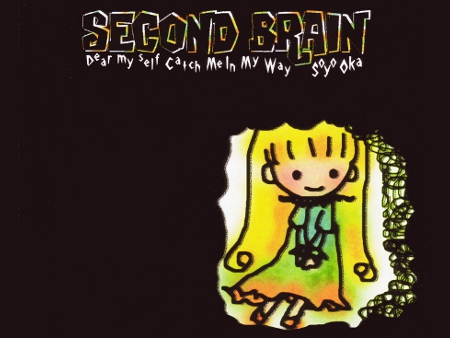
Dave: During your freelance years, you were also involved in several other video game projects, namelyLagnacure, Battle Bugs, and Gakkou no Kaidan. Given the relative obscurity of these games in the West, it would be fascinating to learn more about how you approached these works. Could you tell us more about the concept and content of each of these scores?
Soyo Oka: For Lagnacure, I only worked on the sound effects! The music was composed by someone else. On the other hand, with Battle Bugs, I only worked on the music! It’s an action game featuring cute bug characters.
Through my work on Battle Bugs, I came to know the PlayStation’s sound production environment — the available timbres and the conversion equipment and so forth. After I stopped working at Nintendo, there was very little time, and I had only known the production environment of the Super Famicom, so it felt like I was stepping into a new era, being able to produce music for the PlayStation on the Macintosh I had bought myself, without any commercial grade equipment.
All I remember about Gakkou no Kaidan was that I delivered the music in audio form. So I was able to create freely, without worrying about restrictions on the number of channels or the kinds of instruments I would use.
Dave: Last year you returned to the game music scene by participating in the DeathSmiles Arrange Album and Dariusburst Remix -Wonder World- alongside fellow members of GE-ON-DAN. Could you discuss your experiences on these projects and what inspired your multifaceted arrangements?
Soyo Oka: When I think of arranged albums for games, I remember the albums from a long time ago. Due to hardware restrictions, one was allowed few voices and the loops were very short, but in an arranged album one could use as many voices as one liked and extend the length of the compositions. Through the use of any synth or even live performances, one could transform it into a complete piece. With today’s game music, though, the situation is different. The original pieces are already musically complete. So the arranger gets a chance to bring out his or her own personality, and enjoy working on it.
I was given complete freedom with for the DeathSmiles arrangement, and since the original piece had a very strong horror feel, I decided to take my own arrangement in that direction. The original had a complete sound to it, and I felt that the sparse feeling of its melody, rhythm, and tonality was one of its attractions. I worried about what I should do to prepare my arrangement, but I decided to take specific fragments and extend them as I liked, and changing the harmonic progressions, I created sections without tonality. In this altered form I played around with the rhythm as well, and I did whatever I liked. It was fun work. To bring out the floating feel, I added a high mens chorus, and gave a powerful solo to electric guitar. Overall, it has a flashy, somewhat tense sound.
As for Dariusburst, produced by Taito, the album had an overall story, and each arranger had his or her own title. The piece I was in charge of had the title “Hometown”, the exact opposite of the flashy original. Well, as it was planned, the two discs had separate styles; one was the “Breath of a Machine” disc, and the other the “Breath of a Human” disc. I was assigned to the “human” side. With the two rhythms of an opposing album and an opposing version of the theme using the original, I had a good grasp on my arrangement from the beginning. Leaving the original melody pretty much as-is, I lowered the tempo and gave the leading part to violin and acoustic guitar. I decided not to make any use of drums, and a semi-classical air can be detected throughout. Keeping the melody line from the original, I aimed for “kindness and sorrow”.
When I was recording the arrangement in the studio, I ran into a friend who happened to playDariusburst and knew the original music well. When recording had finished, he asked “by the way, which piece was that based off of?” When I answered, he was shocked. “You’re right! I do know that melody!”
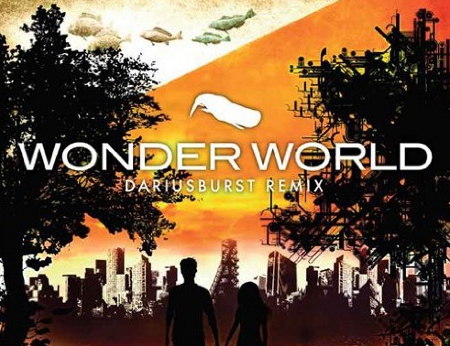
Dave: Evidently, many of your freelance projects have demonstrated considerable stylistic versatility and technical expertise. How have you developed this versatility over the years?
Soyo Oka: Versatility? I had never thought of it that way, but thank you very much for saying so! I am not at all well-informed, but I do love music, so I am influenced unconsciously by the music that I hear for the most part. I think that the classical music that I studied from a young age provided a strong foundation, and that I continue to apply that experience. I am truly grateful to my parents for allowing my piano lessons to continue.
Dave: We greatly appreciate your time and detailed responses today, Soyo Oka. To finish, what should we expect from you in the future in the games industry and beyond?
Soyo Oka: Regarding new projects, I worked on another game recently. It’s Zombie Daisuki, a DS game from Chunsoft. It came out January 20, 2011, and I composed the music! In addition, I worked on another arranged album that was released in January, for Konami’s Castlevania series. It is the third track on Akumajo Dracula Tribute Album Vol. 2.
I’m quite lazy, so I only just recently registered on MySpace. I’m still a novice, so I haven’t gotten the hang of it yet, but I plan on putting up some new music in the future, so please make sure to visit sometime. It may be difficult to upload the music I’ve written for work, though (due to copyrights and such). I’d like to include new music as well! I haven’t done anything other than register, though. You can get the newest information about me at Twitter. My public homepage is here and I’d like to publish new information on my Facebook page as well.
Dave: Are there any final words you’d like to say to your fans around the world? Many thanks once again.
Soyo Oka: I’d like to thank everyone who remembers the music I wrote for Nintendo, and everyone that continues to love it to this day. I’m going to keep on working hard, so please continue to support and encourage me!
Many thanks to Yuji Takenouchi for coordinating this interview, Shota Nakama for translating the questions, Ben Schweitzer for translating the extensive answers, Dave Harris for contributing questions, and Don Kotowski for additional support.
Posted on March 28, 2011 by Dave Harris. Last modified on May 21, 2014.


